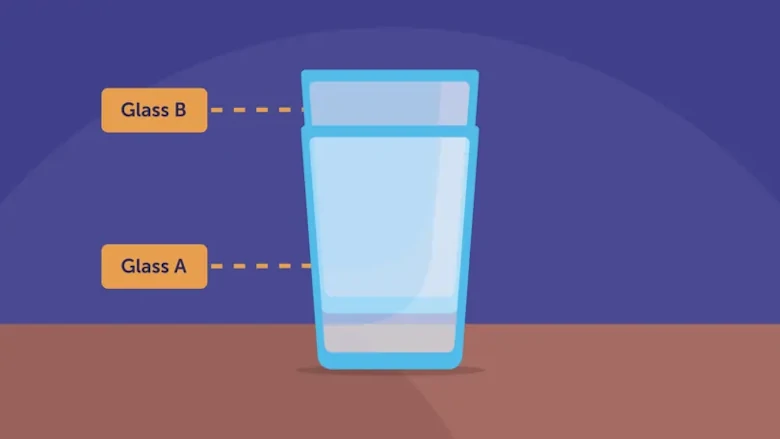How to answer open-ended questions in PSLE science
- Tags:
- Primary Science

If your child breezes through multiple-choice questions but finds open-ended questions challenging, they're not alone. Unlike multiple-choice questions (MCQs), where a student's subject knowledge can help them score, answering open-ended questions tests a student to concept application and problem-solving skills.
In this article, we'll understand how to approach open-ended questions and also go over some answering techniques.
Importance Of Open-Ended Questions In PSLE
Open-ended questions play a crucial role in the PSLE exam. While these questions test a student's core subject knowledge, they're also testing:
- their ability to think critically,
- are they able to apply the concepts that they have learnt, and
- can they think critically and focus on problem-solving.
These questions require students to demonstrate a deeper understanding of the subject matter and showcase their analytical skills.
Understanding The Structure Of Open-Ended Questions
Before trying to answer an open-ended question, it's important to understand their structure.
All open-ended questions typically contain three distinct components that provide clues to how your child should answer the question. If your child learns to identify these clues, they will be able to easily answer any open-ended question.
So, let's go over the three components of an open-ended question:
- Question Stem:
The question stem forms the core of the open-ended question. It is the main part that presents the problem or topic you need to address. Being able to identify the question stem is essential as it sets the overall direction and focus of the response. - Relevant Information or Context:
Open-ended questions often provide additional information or context to help the student better comprehend the problem. This information may include facts, scenarios, data, or descriptions that are directly related to the question. Paying close attention to this information is crucial for formulating a well-informed response. - Specific Requirements:
Open-ended questions may also include specific requirements or instructions that outline what is expected in your answer. These requirements could involve using diagrams, providing examples, analysing data, or applying specific concepts or theories. It is important to identify and adhere to these requirements while formulating the response.
Key Points To Note
- When faced with an open-ended question, it is vital to read the entire question carefully. Encourage your child to take time to grasp the complete picture and understand what is being asked. By doing so, they can identify the main question stem, absorb the relevant information or context, and discern any specific requirements outlined in the question.
- By understanding the structure of open-ended questions, your child can ensure that their response addresses all the necessary aspects. This will help them provide a well-organised and comprehensive answer that showcases their knowledge and analytical skills.
Pro Tip: The question is your child's best friend
Explain to your child to treat the question as their friend. It's not just a question - but it has clues that will guide them towards the right answer. By learning how to analyse the question, they can identify key requirements and structure their response effectively.
Example Of How To Analyse An Open-Ended Question
Let's examine an open-ended question from a previous PSLE Science exam.
Question:
Two glasses, \(\text{A}\) and \(\text{B}\), are stuck together as seen in the diagram below. Ahmad was unable to separate them with his hands for safety reasons. Describe two ways Ahmad can separate the glasses. You may use a diagram in your answer.

The question sets the stage for the problem we need to solve - two glasses (\(\text{A}\) and \(\text{B}\)) that are stuck together tightly. Understanding this situation is important because it helps us figure out how to solve the problem. We need to remember that Ahmad can't separate the glasses with his hands because it's not safe. So, any solution we come up with should not involve anything that might be unsafe. This means we can't use too much force or try to pull the glasses apart. It's also important to note that we can't use any slippery substances like lubricants in our answer.
Structuring Your Answer
When constructing your answer to a science open-ended question, pay attention to three key elements: the subject, evidence, and concept.
- Identifying the subject: Begin by identifying the main subject or topic of the question. Extract this information from the key details provided in the question stem.
- Presenting the evidence: Next, highlight the relevant evidence from the question that supports your answer. This evidence can be found in the key information you previously identified.
- Linking to the concept: Finally, establish a connection between the evidence and the specific scientific concept that the question is addressing. This ensures that your response is focused and directly relevant to the question.
By adhering to this basic structure, you can effectively organise your answer to any open-ended question in the science exam. Remember, practice is key. Try employing this structure during your study sessions and mock exams to refine your skills and enhance your performance.
Avoiding Common Mistakes
Students often make common mistakes when attempting open-ended questions. One such mistake is failing to read the entire question and overlooking important details. By neglecting the question stem, students miss out on crucial information that may impact their answers. Another common mistake is ignoring safety restrictions or guidelines mentioned in the question. It is important to consider all aspects of the question to provide a well-rounded and accurate response.
In the previous example, many students may not notice the “safety reasons” mentioned in the question, and thus end up giving the wrong answer.
Enhancing Your Answers
To improve your answers to open-ended questions, there are several strategies you can employ.
First, provide relevant explanations and justifications for your answers. Avoid simply stating the answer; instead, explain why and how your solution or approach is appropriate.
Additionally, if the question allows, utilise diagrams or illustrations to enhance your answer. Visual representations can often clarify concepts and make your response more comprehensive. Ensure that your diagrams are labelled and clearly relate to your explanation.
Lastly, use appropriate scientific language and terminology when answering open-ended questions. This demonstrates your understanding of the subject matter and showcases your proficiency in the topic being assessed.
Practising With Past Exam Questions
Practice is essential to build confidence and improve your performance in answering open-ended questions. Seek out past PSLE exam questions and answer them under timed conditions.
By familiarising yourself with the format and types of questions asked in previous exams, you can develop effective strategies and become more comfortable with the expectations. We've solved the challenging turkey question from PSLE 2022 in this article. Do check it out.


 SG
SG  VN
VN 



















